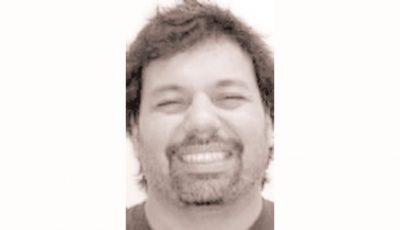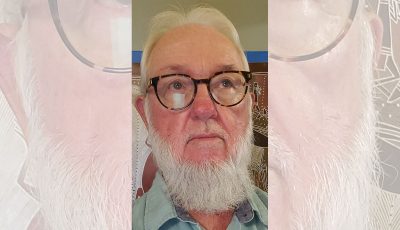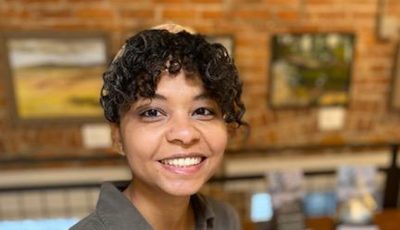Easter morn
The empty tomb is a later addition to the gospel narratives of Jesus of Nazareth, the Gospels turned into a Koranic document of late, miraculously dictated by cherubs of the heavenly realm to loyal scribes, thus the treatment of the stories as historical accounts, and the sorry attempt to have a single telling to merge the specifics of each narrative.
The walking of the living among the dead is our metaphor for the empty tomb, more so because my autistic son turns 20 today. He walks among the living but is treated as if he was an excisable disease.
The psychologist Viktor Frankl survived the Auschwitz concentration camp to write of his therapeutic ordeal in a 1946 book, later issued in English as Man’s Search for Meaning. With logotherapy, he affirmed the human capacity to survive any circumstance by finding meaning in it. It affirms the freedom and capacity to decide, to relate to any situation.
A life stance is narrated in a gospel that puts Jesus by the pool of Bethsaida where he asked a paraplegic lying on a mat the question: “Do you want to get well?” The guy, said to have waited for 38 years, repeated his life story that when an angel of the Lord came to stir the waters so he could jump and be cured, someone else jumped in before him. Jesus said: “Pick up your mat and walk.”
I equate the mat with the man’s whole life. The message is clear: “Pick up your life, all of it, and live!” My young Daniel knows those words trapped in a self-contained world.
The dramaturgy of this is well orchestrated, especially in far-flung areas where once the Holy Roman ethos prevailed. It pacified Medievals under ecclesiastic and royal management by having Europe focus on Jesus’ travails in Golgotha after the anguish in Gethsemani in a salvific story, then added the Reformation’s emphasis on the empty tomb and went on to explore triumphantly the world.
The existential implication of celebrating the here-and-now as the glorious morn grabs the imagination of life in the modern world. The Easter Sunday sunrise worship service is an operating symbol of hope, a great excuse to go outdoors.
The name Easter harkens back to the goddess Ishtar (originally pronounced Easter) of love, war, sexuality and fertility, aka, Eostre, Astarte, Ostera, and Eastre, the goddess of spring.
I write from Saipan where post-Vatican II Catholics reign in Chalan Kanoa, along with its abortive counterparts from England via the U.S. of A., the Episcopal and United Methodist Churches. Metaphors of the “empty tomb” and images of the “resurrection” are common to familiar ears that I now sent to a friend whose adopted daughter gave birth in Tuvalu and died; he traveled to Polynesia last week to adopt the new generation!
Near Sister Remedios Early Childhood Development Center that beads the rosary are folks who greet you Namaste with clasped hands and utter a deep Om, exhaling and inhaling simultaneously. Regardless of which of the 4 Vedas they emphasize, the Om sound they chant represents laws and prescriptions of “daily morality” based on karma, dharma, and social norms from the all-embracing Hindu Way. Its numbers include the nonviolent Jains who follow nonviolent ahimsa path, and the monotheist refinements of the turbaned Sikhs.
It may not have the combative nature of “compare and contrast” that dots the day’s pedagogy with its roots to time consciousness (now, before and after), but Xizang’s (Tibet) understanding of life through the discipline of Oṃ maṇi padme hūm is recited by those attaining the Buddha state to unify the inadequacies of this life, its sufferings and anxieties, to the fullness of the tranquil stillness of the All. In the midst of Saipan’s diversity, the holy chant is heard.
Up near the marshes of Lake Susupe, one hears the Muslim adhan, the call to prayers by a muezzin normally atop a minaret, “miniaturized” in the Saipan mosque. To hear Allahu Akbar in the green sway of the Marianas breeze is an affirmation that the faithful to “the Way Life Is” fully live lives everywhere.
These traditions of the “Way” are common in Sinosphere, providing a lifetime understanding that practices of Buddha and Dao communicate. Deep is the experience of a duality of life but carries a different resolve from the combative dualism of Zoroaster’s dichotomy that Europe appropriated. Instead of letting one side annihilate the other, good vs. evil, the Tao maintains the distinctiveness of the yin-yang that balances opposing forces in a swirl. The harmony process is key. Kung Fu Zi (Confucius) wrote of moderation. The Way of the Tao instructs a global following.
I am a secular street-smart world-wise Pinoy whose son may just restate the Way as: “Get your butt going,” Easter without the trimmings!



























